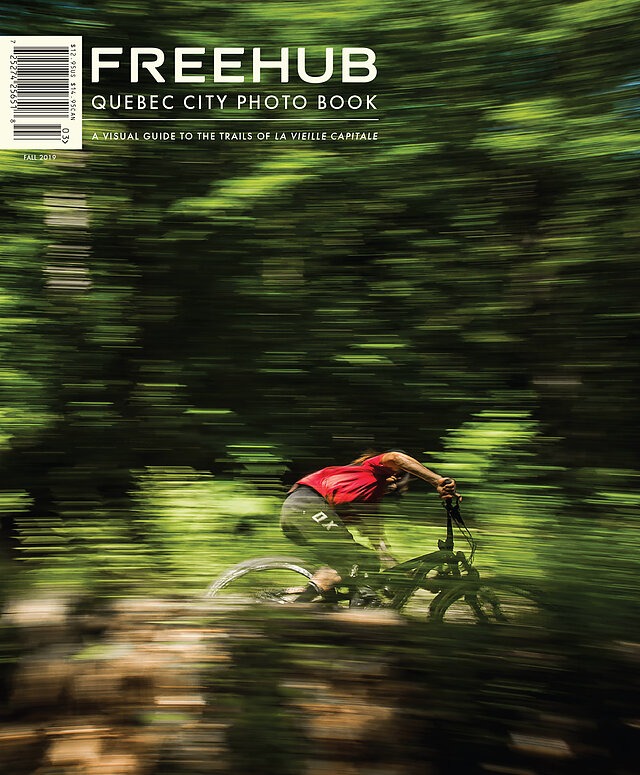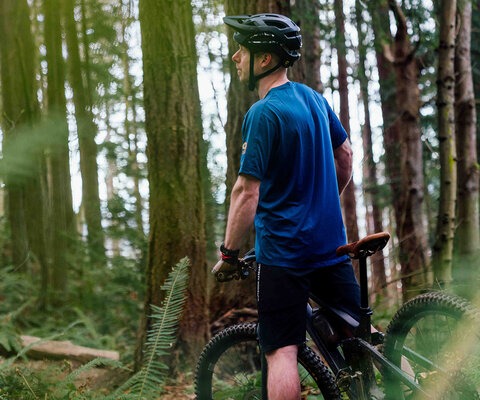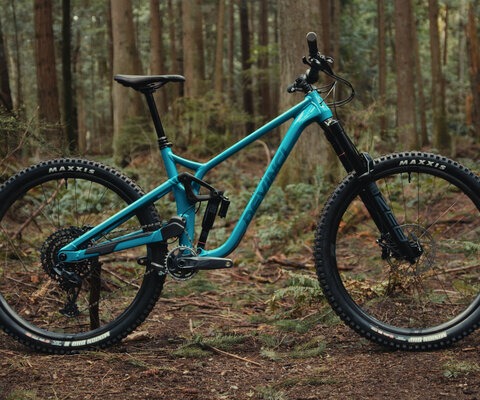Welcome to Issue 10.3
Our understanding of mountain biking is largely shaped by the photography that helps define the sport, and Freehub’s annual Photo Book showcases some of the finest imagery. This year, we’ve assembled a curated collection dedicated to one special place: The Canadian province of Quebec, a land so geographically and culturally distinct that it is, by definition, nonpareil. From the storied racetracks of Mont-Sainte-Anne to the sprawling singletrack network of Vallée Bras-du-Nord, the province offers an abundance of trails suited to riders of all interests and abilities. The Quebec City area alone boasts hundreds of miles of singletrack ranging from scenic cross-country loops to burly downhill scorchers. Issue 10.3 gives the lowdown on this region’s most amazing riding.

It is often said that the devil makes work for idle hands, and Vallée Bras-du-Nord is one place where the truth in this phrase is abundantly clear.
While riding through this singletrack-filled valley, one might encounter the Projet Jeunesse (Youth Project) team—a group of 10 youth sporting tattoos, body piercings and heavy metal T-shirts—using their once-idle hands to work magic on the area’s trails.
Though they’re a rather disparate bunch of young men and women in their late teens and early 20s, they all bear similar burdens. Most come from dysfunctional families and were falling into all-too-familiar cycles of violence, alcohol or drug problems, and minor crimes until they signed up for this visionary trail-building program. Now they spend long days working in the forest, rain or shine, coping with the summer heat and mosquitoes, building new trails and helping maintain existing ones.
For many of them, this project is their first chance to create something meaningful with their own hands. And the fruit of their labor is beautiful singletrack that will be enjoyed by thousands of hikers and mountain bikers, which, in turn, helps to spread Vallée Bras-du-Nord’s reputation as a nature retreat with quality mountain bike trails...
Words by Gilles Morneau
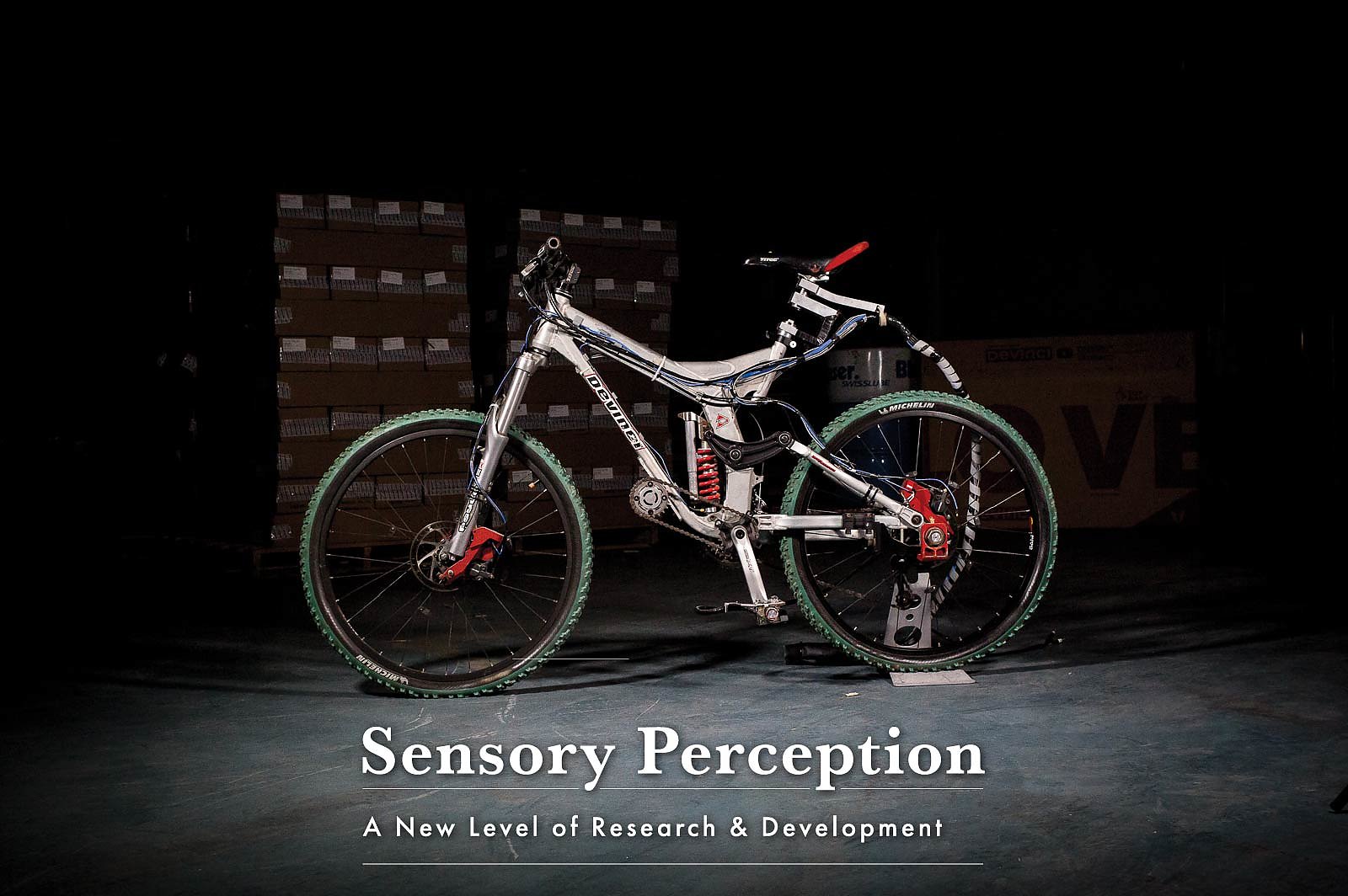
Nine years after Mont-Sainte-Anne (MSA) hosted its first World Cup race in 1991, a small bicycle manufacturer 150 miles to the north, Devinci Cycles, moved into a new 100,000-square-foot factory.
Alongside the company’s manufacturing machines and streamlined production center, it now had the space and resources to take its research and development department to a higher level. So, Bruno Gauthier, director of research and development, outfitted a bike with a sensor in just about every location he could.
“We created a force-acquisition system that can measure the force on the front bar, the rear hub, the exact angle of the pedal, the force on the pedal, force on the saddle, force on the shock, the force on the front fork and the displacement of the front bars,” Gauthier says. “This was incredible...”
Words by Jann Eberharter | Photo by Brandon Watts
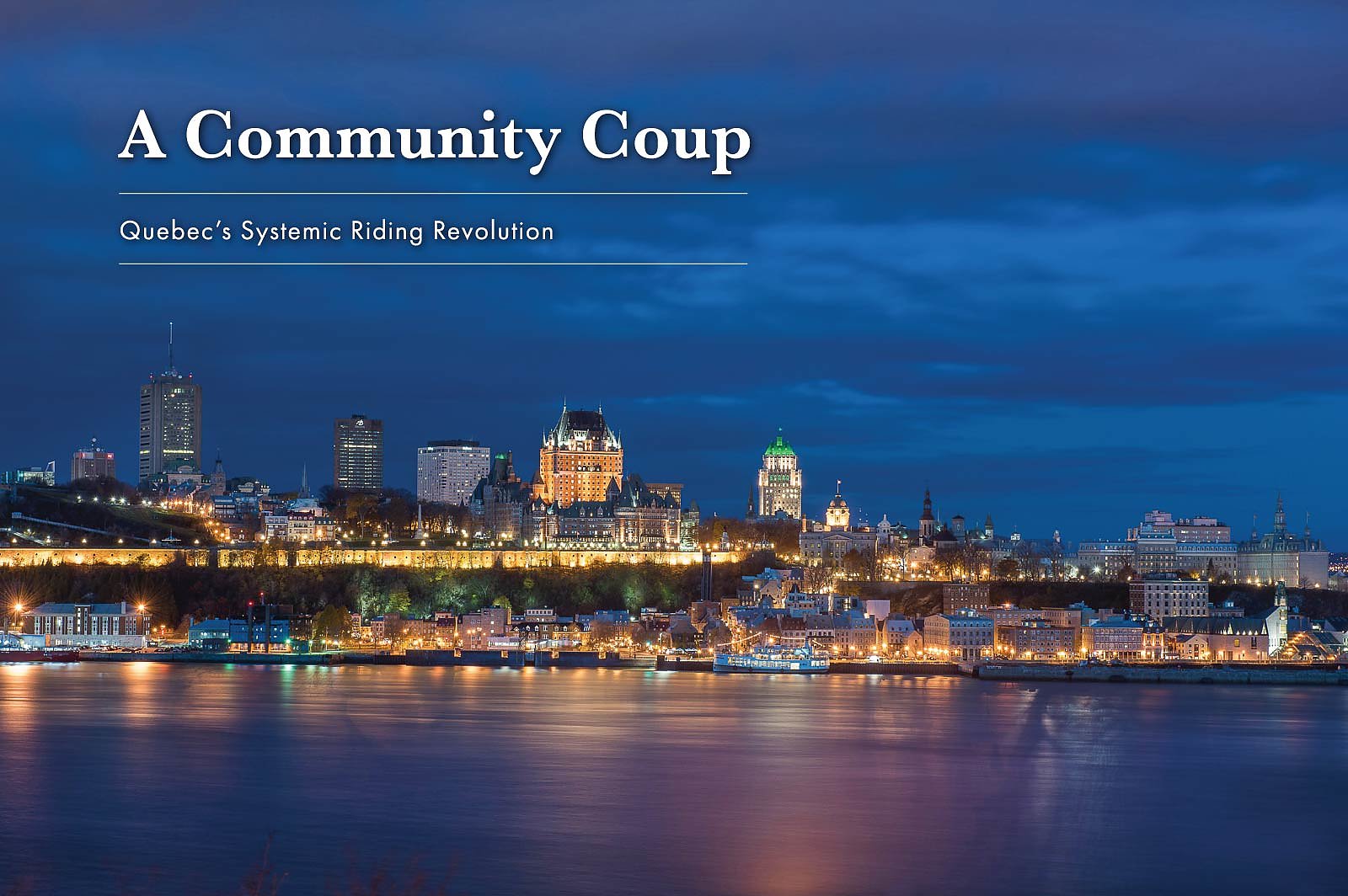
From the outside looking in, the Canadian province of Quebec is a lot to wrap your head around.
Geographically, it’s massive. At 644,000 square miles, it’s 2.4 times the size of Texas, though most of it is uninhabited wilderness and arctic tundra. Its two largest cities, Montreal and Quebec City, are on the banks of the Saint Lawrence River and feature some of North America’s oldest, most European-style architecture. Culturally, and perhaps most importantly, it has a distinct identity: More than 80 percent of Quebecois are native French speakers and 95 percent of residents are fluent in French.
The mother tongue is so vehemently protected in Quebec that even the stop signs are in French. They say “arrêt” instead of “stop” (by comparison, even stop signs in France say “stop”). The place is undeniably independent, but also welcoming and laid back. Quebec has 8.4 million inhabitants, but excluding Montreal and Quebec City, only one other city is home to more than 200,000 residents. Rural communities, mining towns and abandoned villages line the province’s many rivers, lakes and highways—visible proof of Canada’s dependence on cyclical demand for natural resources.
Quebec is a rugged landscape of large hills, black dirt and endless granite. Loamy pockets of pine forest lurk in the shadows. Its people embrace the outdoors, despite having some of the world’s most brutal winters. The Quebecois adopted mountain biking early and invested in sanctioned racing programs and athlete development that left a structured legacy of speed that still burns from local races to the world’s fastest stage. Now, the sport is riding a wave of popularity made possible by a decade of trailbuilding and government support. Quebec is unconventional by nature, but mountain biking has long had a home here...
Words by Quinn Lanzon

To most mountain bikers, the name Mont-Sainte-Anne (MSA) conjures up iconic images of World Cup racing glory,
from mud-soaked downhill championships to grueling tests of cross-country endurance. For a relatively small mountain of 2,050 feet in elevation, its global reputation punches far above its height, registering some of the most memorable moments in mountain bike racing history.
The mountain established itself as part of the mountain bike racing circuit in the early days of international racing, hosting its first World Cup event in 1991. Since then, MSA has been the site of a World Cup race every year, at times fielding the actual World Championships. These races have become the main act in a massive bike festival called Velirium, organized by a company whose boss, Patrice Drouin, was a forefather of mountain biking in Quebec.
The mountain’s World Cup racing pedigree had a huge influence on the region’s riding community, and over the years many standout athletes emerged from the scene, which even fostered Olympic greats such as Marie-Hélène Prémont, who won a silver medal in the cross-country discipline in 2004...
Words by Franck Kirscher | Photos by Andy Vathis
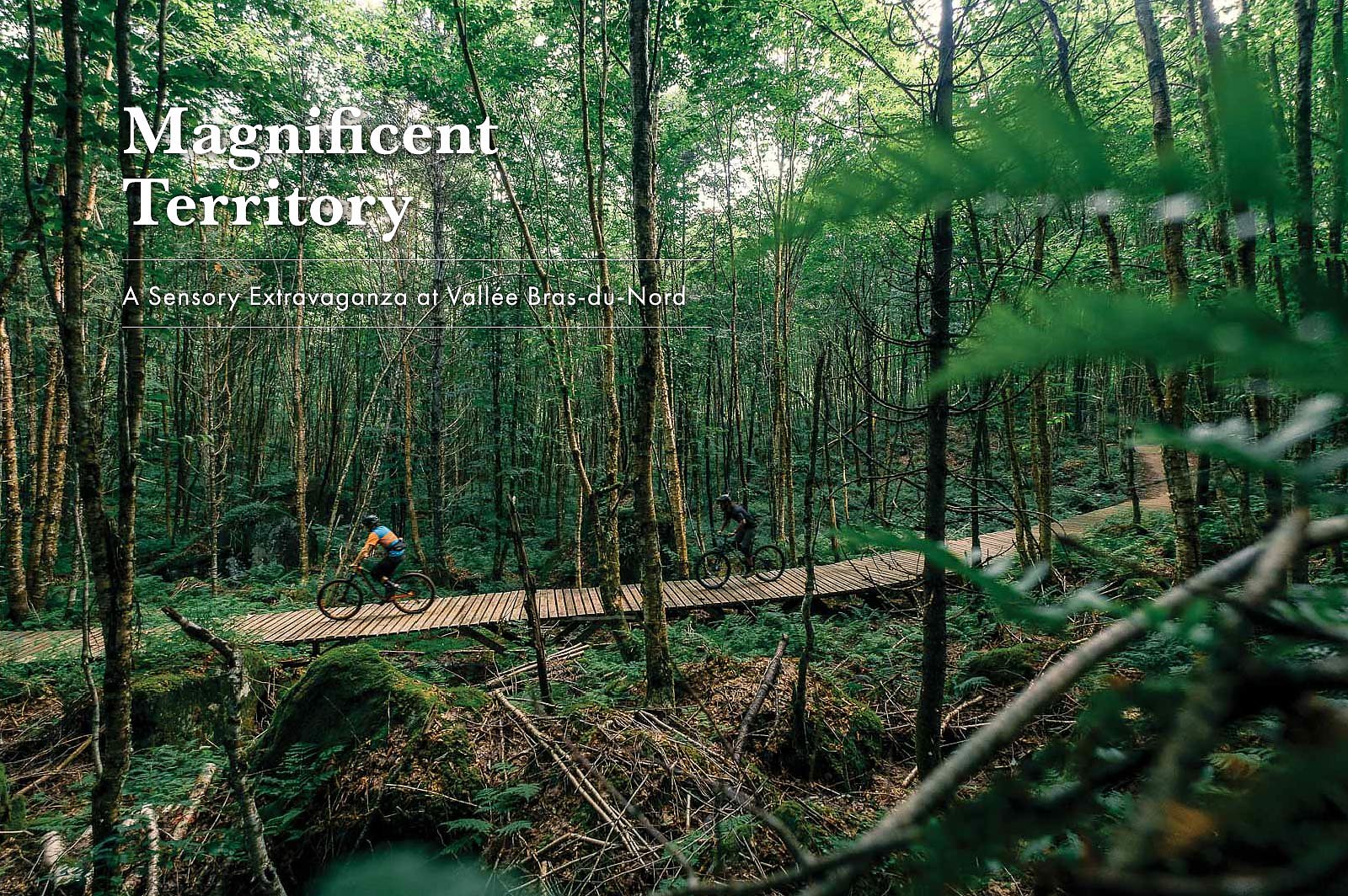
The first time I ever rode at Vallée Bras-du-Nord (VBN) was in the summer of 2010, shortly after moving back to my hometown of Quebec City from British Columbia’s renowned Seato-Sky Corridor.
Though I rationalized returning home as a normal thing to do while building a family, leaving behind a dream job and easy access to world-class riding was one of the most difficult decisions of my life.
During the move, I almost sold my trusty Specialized Demo 7 downhill bike but decided to keep it for another season or two to ride Mont-Sainte-Anne’s burly DH tracks. In typical mountain-biker fashion, I used this as justification for buying a smaller travel bike to explore the trails near Quebec City.
That was the bike I took on my first trip to VBN and, by the end of my first day of riding, I was at peace with my decision to move home, as well as to buy that bike. There was something about the place that felt just right. Nine years after my maiden VBN voyage, the Coopérative de Solidarité Vallée Bras-du-Nord is an established destination for mountain
bikers in Quebec, Ontario and the northeastern United States. It’s also the sister network of Vermont’s Kingdom Trails, one of the most popular cross-country networks in the eastern United States...
Words by Gabriel Gakwaya | Photos by Francis Fontaine
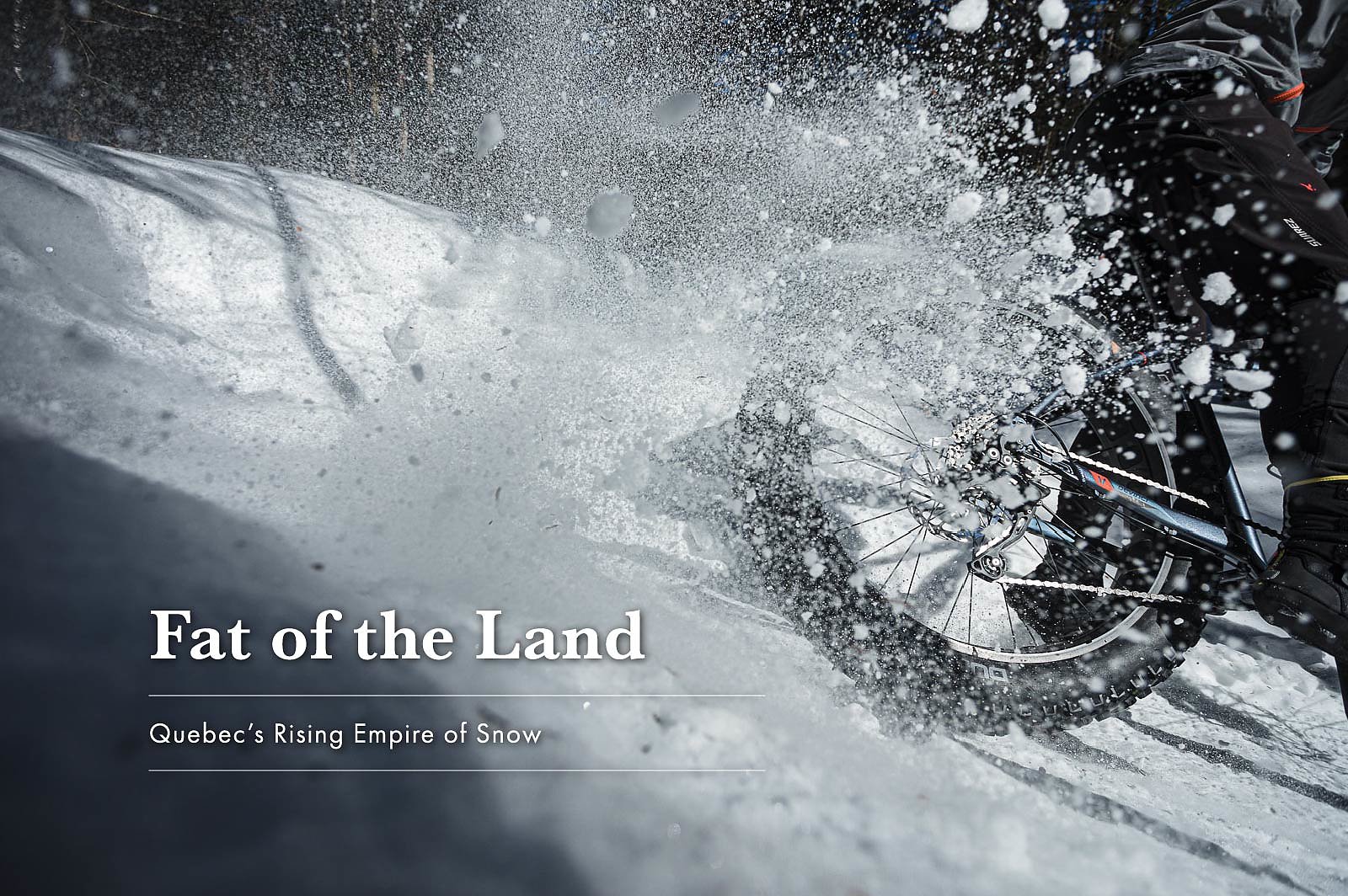
On a beautiful March afternoon, Christian Déry and Catherine Roy are standing by the patio fire pit beside the welcome center of Empire 47, a four-season trail center just outside of Quebec City.
They chat with local fatbikers while washing down grilledcheese sandwiches with a tasty local brew. The patio is packed with winter cyclists coming and going from snow rides on their bright-orange fatbike rentals.
The couple, in their 40s, owns the biggest chunk of private land around Quebec City: 1,350 acres, now crisscrossed by the trails of Empire 47, known locally as E47. Both help to run the nonprofit organization that oversees E47’s development, with Déry serving as the director and Roy working as the accountant and a board member. Today, though, they’re taking a break from their busy routine to ride bikes with two of their five children—sharing the spoils of an unorthodox trajectory that has made E47 one of the world’s most popular fatbike destinations.
“It’s the story of nutty people doing nutty things,” Déry says...
Words by Gilles Morneau | Photos by Dylan Page
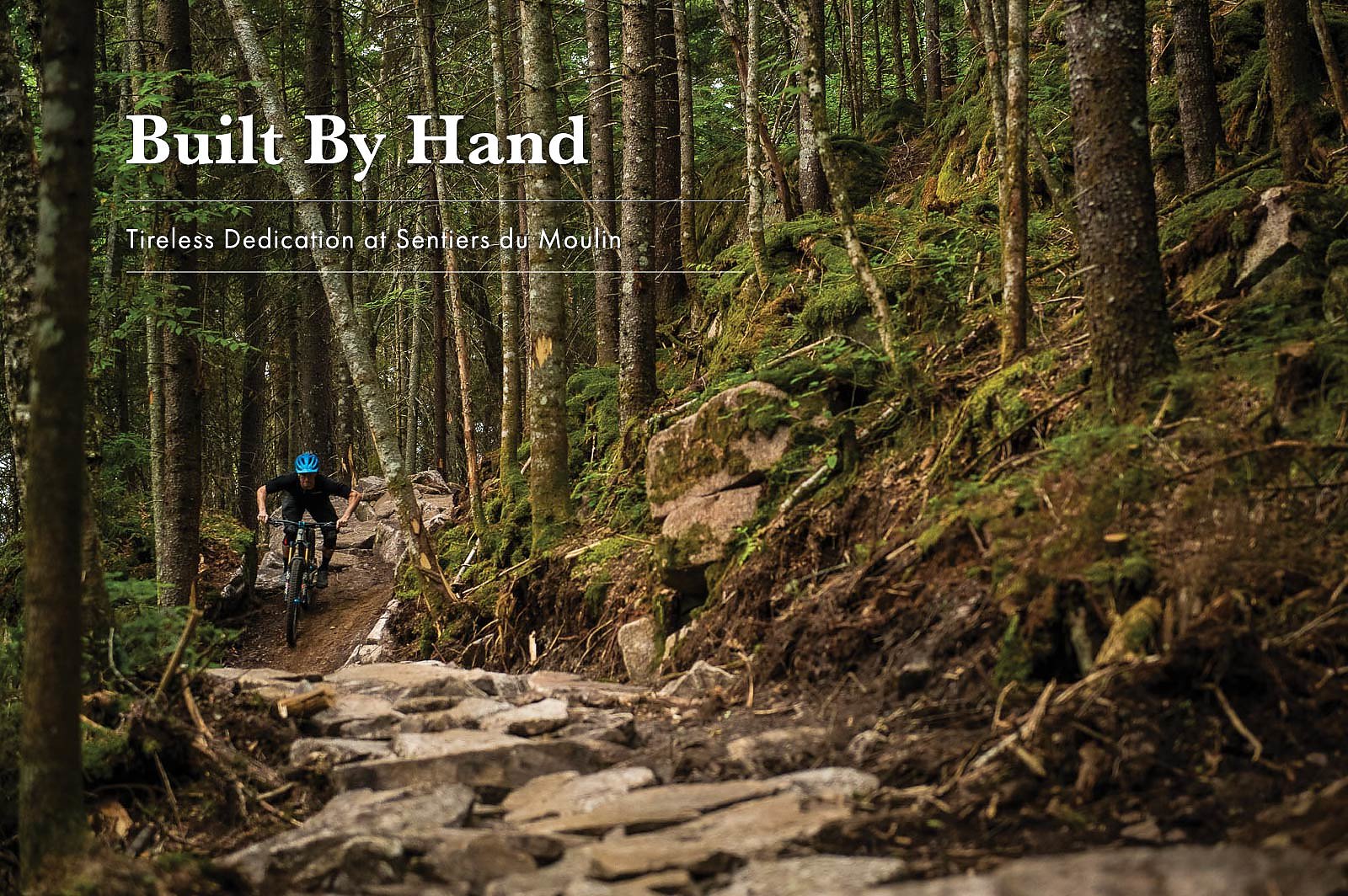
Having grown up during the formative years of Quebec’s mountain bike scene, Les Sentiers du Moulin (SDM) holds a special place in my heart.
Some of my fondest memories are of people dedicating their time to develop mountain biking in this beautiful place, and its story is representative of Quebec’s overall growth into one of the world’s major mountain bike destinations.
My mother used to drive me to the local riding club’s weekly training evenings at SDM, and it was the site of my first-ever cross-country race in 2006, when I was 13 years old. Since those days, I’ve seen the local trail network blossom into a thriving hub of mountain bike culture, thanks to years of tireless volunteer work in the forms of trailbuilding, coaching and race organization.
What started as a Nordic skiing center in 1989 began to morph into a bastion of mountain biking some 15 years ago, as area riders realized the enormous potential the once-private land offered during the warmer months. These early pioneers, members of a cross-country-development club supported by local bike shop Mathieu Performance, were organizing a regional XC race in 2006 and reached out to one of their hardworking members, Érick Gagnon. Already deep into the development of a trail complex around nearby Lake Beauport, Gagnon recognized the promise of SDM and began building trails with a dedicated crew of local volunteers in 2007...
Words by Andréane Lanthier Nadeau | Photos by Étienne Dionne
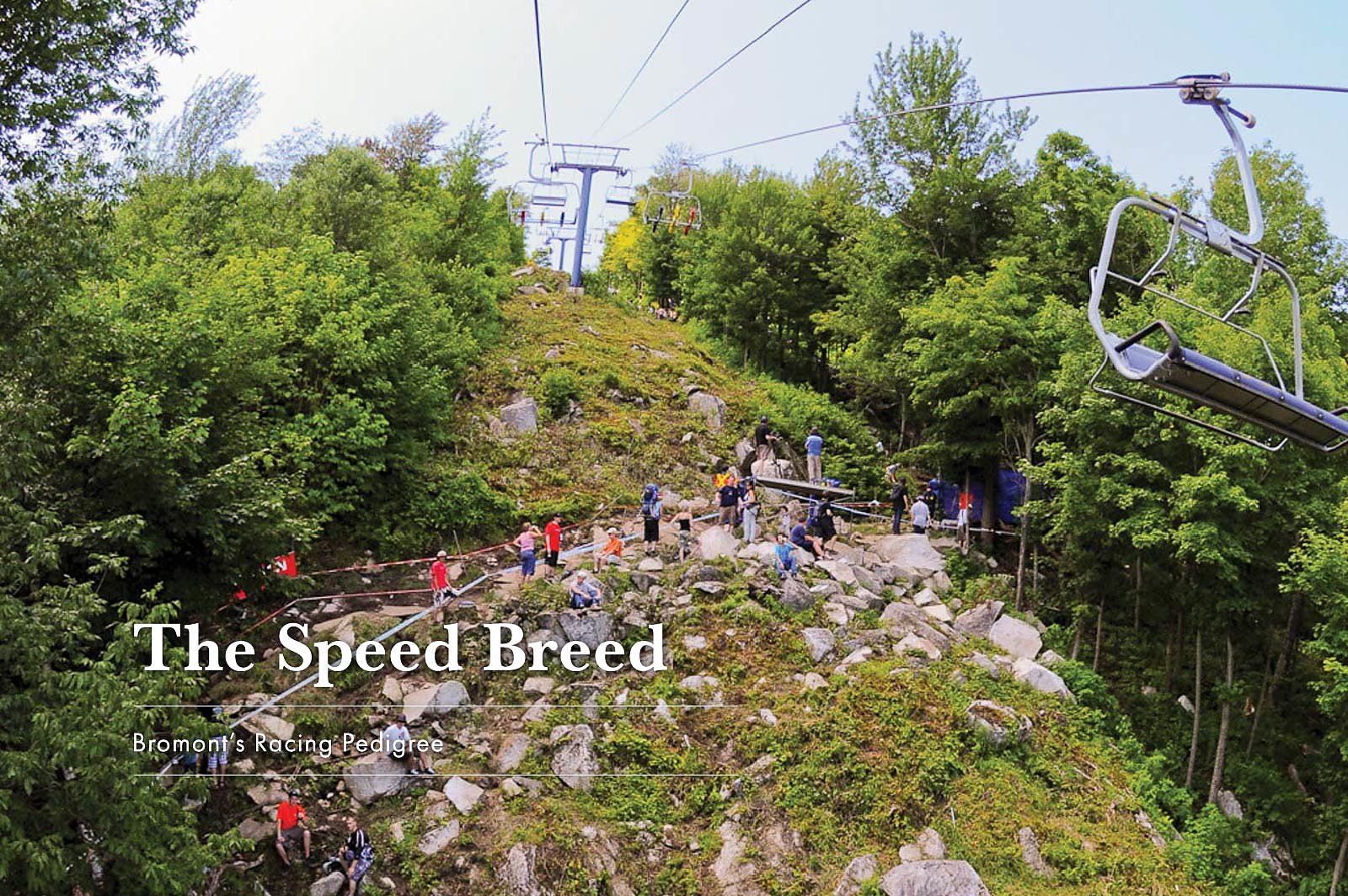
In the context of Quebec as a whole, it’s impossible to ignore Montreal’s 4.2 million people, more than half the province’s total population.
Montreal is a modern, world-class city, and though it might lack some of Quebec City’s classic European feel, it more than makes up for it with its food, nightlife and massive urban parks. For mountain bikers living here, there’s an outlet less than an hour’s drive from the city that’s been cranking out high-level riders for almost 30 years: Bromont.
The mountain was the first in Canada to host the UCI Mountain Bike World Championships, back in 1992. Since then, it has fielded multiple World Cup racing events, most recently in 2009, and its fast, rocky trails are home to one of the healthiest racing scenes in eastern North America. Here, the regular pace of many local riders borders on that of a race. Segments from the movies Earthed 1 and Earthed 5 were filmed here, as was a scene from Anthill Films’ new feature movie, Return to Earth. Underscoring Bromont’s reputation for high-speed glory is the fact that many World Cup racers consider it a mandatory stop when traveling between North American race venues...
Words by Quinn Lanzon | Photo by Gabriel Distilio
